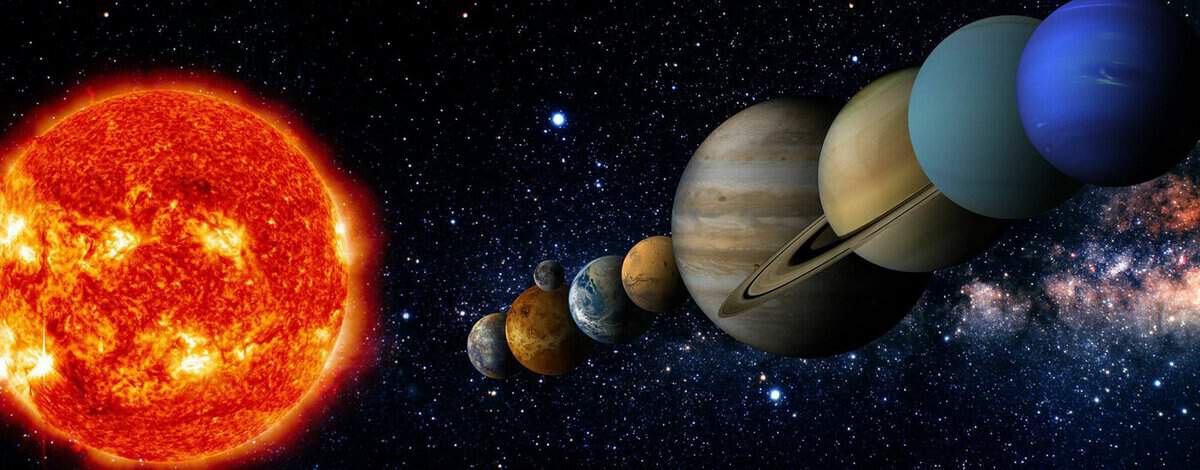1. What is the primary focus of astronomy? Provide a list of the key aspects studied in this field.
Astronomy delves into the composition, movement, origin, and development of celestial bodies, their systems, and the entire universe. Put simply, astronomy investigates the structure and evolution of the cosmos.
Some significant objectives of astronomy include elucidating and forecasting celestial phenomena, such as solar and lunar occultations, periodic comet appearances, and the movement of asteroids and sizable meteoroids, which can be either asteroid fragments or comet nuclei.
2. What are the origins of astronomy? Describe its major stages of progression.
Similar to other fields of study, the science of astronomy emerged from the practical necessities of humanity: the necessity for navigation in a nomadic way of life, predicting the arrival of different farming seasons, and the requirement for time measurement and chronology (such as creating calendars).
3. What does astronomy study and list the objects and their systems in order of increasing size?
Astronomy is a scientific field that focuses on the study and investigation of various celestial objects and their systems. These objects include galaxies, stars, interstellar medium, planets, planetary satellites, dwarf planets, and small bodies of the solar system. By studying these objects, astronomers are able to explain and predict a wide range of astronomical phenomena such as solar and lunar eclipses, the appearance of periodic comets, and the motion of planets and asteroids. Additionally, astronomy also involves the investigation of processes occurring in the interior of the Sun and stars, as well as the evolution of celestial bodies and the Universe as a whole.
4 What are the branches of astronomy? Provide a brief description of each.
- Practical astronomy. Practical astronomy emerged as a result of the need to develop methods of orientation and determine the geographical position of observers. It also involved accurately measuring time based on astronomical observations, which was crucial for the development of commerce and navigation.
- Celestial mechanics. Celestial mechanics focuses on studying the motion of celestial bodies. By understanding the laws of motion and gravity, scientists can predict and explain the movements of planets, stars, and other celestial objects.
- Comparative planetology. Comparative planetology involves studying and comparing Earth to other planets and satellites using optical instruments. By examining the similarities and differences between celestial bodies, scientists can gain insights into the formation and evolution of planets.
- Astrophysics. Astrophysics is the branch of astronomy that investigates the physical phenomena and chemical processes occurring in celestial bodies, their systems, and outer space. It explores topics such as stellar evolution, the behavior of galaxies, and the properties of interstellar matter.
- Stellar astronomy. Exploring the movement of stars within our Galaxy and investigating the characteristics of other stellar systems.
- Cosmology. Investigating the inception, arrangement, and progression of the universe.
- Radio astronomy. Researching radio emissions originating from the Sun and remote celestial objects.
Telescopes have the capability to gather the light emitted by celestial bodies and create a visual representation of them. By increasing the angle of view, telescopes enable observers to see celestial bodies with more clarity and collect significantly more light compared to the naked eye. This enhanced light-gathering ability allows telescopes to capture intricate details of nearby celestial bodies that are otherwise imperceptible from Earth, as well as numerous dim stars.
6. What is the importance of astronomy in practical human activities?
Astronomy plays a crucial role in solving numerous challenges in astronautics. It aids in making optimal decisions and precise calculations regarding the trajectories of man-made celestial objects. Additionally, it helps determine the distances to various celestial bodies within our solar system and allows for the selection of favorable timing for interplanetary travel. Moreover, astronomy enables scientists to study matter in conditions that are not attainable on Earth. Lastly, astronomical research serves as a warning system for potential asteroid threats.
Astronomy
Astronomy serves a purpose by lifting us beyond ourselves; it serves a purpose by being majestic; it serves a purpose by being beautiful. It is through astronomy that we come to understand the insignificance of man in body and the greatness of man in spirit.
Henri Poincaré
What is astronomy?
Astronomy is the scientific study of the universe, including its motion, order, and structure. It also encompasses the exploration of the origins and development of celestial bodies and systems. In simpler terms, astronomy is the study of space, planets, and other celestial objects.

The principles of astronomy are founded on the observation and examination of the surrounding cosmos.
The Emergence of the Notion of Astronomy
The notion of astronomy came into being in ancient Greece, during the period when Pythagoras and Aristotle commenced their exploration of the cosmos.

Pythagoras and Aristotle
It is believed that the concept of astronomy originated from the ancient Greek words astrom-star and nomos-law. Thus, it can be understood as the law of stars or the law concerning stars.
What does astronomy study?
Astronomy encompasses the study of the entire universe, including all its objects and systems.
So, what exactly are the objects and phenomena that astronomy focuses on? These include stars, planets, meteors, and comets. Additionally, astronomy investigates galaxies, nebulae, and everything that exists in outer space.
In simple terms, space is the primary subject of astronomy.
When did the science of astronomy emerge?
In reality, astronomy came into existence before other scientific disciplines. In fact, it holds the distinction of being one of the oldest sciences.
While it is difficult to pinpoint an exact date for the origin of astronomy, it can be traced back to a very distant past. Approximately in the III-II centuries BC.
The necessity to explore the world around them arose in our ancestors as a means of survival. This was primarily connected to their ability to navigate through different terrains. Additionally, they developed agricultural principles based on their observations. Even in those ancient times, people began to measure time. The accumulated knowledge was applied to various aspects of human life, ranging from basic needs like food and clothing to expanding their horizons and satisfying their curiosity.

Ancient astronomy
Hipparchus is widely recognized as the pioneer of scientific inquiry. He was among the first to meticulously calculate and document the movements of celestial bodies such as the sun and moon. Moreover, he established a system of categorizing stars based on their luminosity, a classification that remains relevant in contemporary astronomy.
Astronomy – the enigmatic science
N.S.Leskov
Astronomy Objectives
Similar to any other scientific field, astronomy has its own set of objectives and goals.
Currently, there are three main tasks to be accomplished:
1) the examination of celestial bodies’ positions, movements, shapes, and sizes;
2) the analysis of celestial bodies’ structures and compositions;
3) the investigation of celestial bodies’ formation, evolution, and future.
In the past, astronomy relied more on philosophical perspectives. However, with the advancement of technology, it has become a more precise science. Today, it is undoubtedly intertwined with mathematics, physics, chemistry, and biology. Philosophy is also still considered fundamental to the study of astronomy.
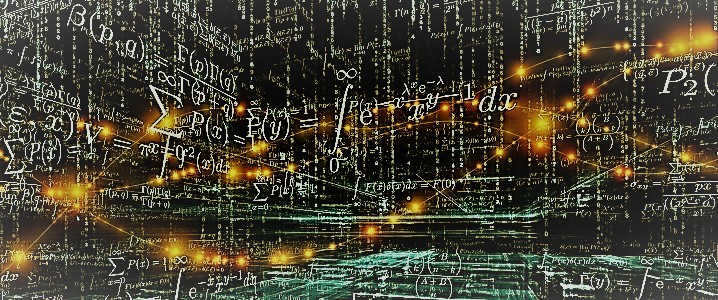
What is the primary purpose of astronomy? It is likely that you have already grasped it.
This fundamental science we have mentioned is focused on the study and exploration of phenomena and objects in the Universe. Naturally, this is done in order to comprehend the essence of the Universe, to understand its structure and characteristics.
Mankind aspires to unravel its secrets and mysteries. Scientists strive to elucidate the origins of everything. Moreover, everyone is eager to uncover what the future holds, to ascertain the truth and gain a genuine understanding of the world.
Thanks to astronomy, we have already acquired a wealth of knowledge. It is safe to say that there is much more in store for us in the future. After all, progress never stands still. There is no doubt that science has advanced, is currently advancing, and will continue to advance.
Until then, see you soon!
School Encyclopedia
Navigation View Search
Navigation
Search
Books
Login Form
When did the first stargazers emerge?
Details Category: Phases of Astronomy Development Published 13.09.2012 15:20 Views: 7888
Astronomy is an incredibly ancient discipline, dating back to the earliest days of civilization.
For countless centuries, humans have gazed up at the sky, attempting to unravel the enigmas of the celestial worlds. However, in the beginning, astronomy (the scientific study of the movement and properties of celestial bodies) was intertwined with astrology (the practice of predicting the influence of celestial bodies on the Earth and human beings). This association continued until the Renaissance, at least in Europe.
Most frequently, the initial astronomers were individuals who combined the roles of philosophers and mathematicians. This is because only those who engaged in deep thought and contemplation about the world and humanity dared to tackle the enigmas of the celestial universe. Their musings were often supported by meticulous calculations. Numerous scholars of ancient times produced writings on this subject, but not all of their works have survived and not all of their names have been passed down to us. Admittedly, during that era, the understanding of astronomers was rather rudimentary and not always accurate. They lacked powerful telescopes and theoretical research methods. Nevertheless, these early forays into the realm of astronomy were intriguing in their own right and deserving of attention. Although it would be a stretch to label these observers of the starry sky as astronomers in the truest sense of the word.
Ancient astronomy
It is believed that astronomical observations and studies date back to the period between the sixth and fourth millennia BC. During this time, the priests of the Babylonian civilization in the Sumero-Akkadian state engaged in various astronomical activities. They meticulously compiled astronomical tables, identified and named the main constellations and the zodiac, and created a lunar calendar. Additionally, they made significant discoveries regarding the laws of motion of the planets, the Moon, and the Sun. Their knowledge also extended to predicting eclipses. It is widely speculated that the concept of a seven-day week originated in Babylon.
In ancient Egypt, there was also a significant amount of astronomical and astrological activity: divination by the moon and planets; the Egyptian geocentric system (as described by Heraclides of Pontus in the 4th century BC). According to this system, the Earth, which is stationary, occupies the central position in the universe. The Sun, Moon, planets, and stars revolve around it. However, Mercury and Venus revolve around the Sun, and together with it, they also revolve around the Earth.
However, in contrast to astronomers in Babylon and ancient China, scientists in India showed little interest in studying stars and did not create star catalogs. Nevertheless, in the 5th century A.D., astronomer and mathematician Aryabhata proposed that planets rotate on their axes. He also accurately explained the causes of solar and lunar eclipses and made predictions about several upcoming eclipses.
As for Inca astronomy, it is closely connected to cosmology and mythology. The Inca people regarded the Milky Way as the most important celestial object, recognized the distinction between stars and planets, and made observations of certain planets.
However, the Mayan civilization had a thriving interest in astronomy. Their astronomers possessed the ability to forecast eclipses and conducted extensive observations of celestial bodies. This is evident from the archaeological findings, which include the existence of Maya temples and observatories. The ancient Mayans also possessed a remarkably precise calendar.
In Europe, there is a structure known as Stonehenge, which was constructed between 1900-1600 BC. Stonehenge served as both a sacred site for rituals and an observatory.
Ancient Greek Astronomers
The ancient Greeks held a deep respect for astronomy. While their initial knowledge may not have been extensive (for example, they believed that morning and evening Venus were separate celestial bodies, despite the Sumerians already knowing otherwise), their understanding gradually improved and expanded. Ancient Greece produced many renowned astronomers who made significant contributions to the field.
The first recorded observational astronomer is Cleostratus of Tenedos (c. 550 BC – c. 430 BC) from the 6th century BC. Historical sources indicate that Cleostratus observed the sky from Mount Ida on the island of Crete. It is believed that he also composed the poem “Astrology”.
The student of Cleostratus (whose name has not been preserved by history) was the initial individual in Greece to define the duration of the tropical year (also referred to as the solar year), which is the timeframe during which the Sun completes a full cycle of seasons as observed from Earth.
Eratosthenes (276 BC – 194 BC) made a significant contribution to the scientific understanding of the Earth in 240 BC. He conducted precise measurements to determine the Earth’s circumference and the tilt of its axis. Additionally, Eratosthenes proposed the concept of a leap year, which is observed in both the Julian and Gregorian calendars. A leap year consists of 366 days, one day longer than a regular, non-leap year. In the Julian calendar, a leap year occurs every fourth year, while the Gregorian calendar has some exceptions to this rule.
During that time, numerous philosophers were actively involved in observing the stars and planets. One notable philosopher, Thales of Miletus (640/624 – 548/549 BC), dedicated his studies to the Sun and even discovered a previously unidentified constellation called the Little Dipper. Thales also developed a method for calculating the timing of solstices and equinoxes, as well as determining the unequal intervals between them. Additionally, he was the first to recognize that the Moon emits light as a reflection and that solar eclipses occur when the Moon covers the Sun. Thales also made significant contributions to understanding the sizes of the Moon and the Sun by determining their angular sizes. He determined that the Sun’s size is 1/720th of its circular path, while the Moon’s size is the same fraction of its lunar orbit. Furthermore, Thales introduced a calendar system similar to the Egyptian one, which consisted of 365 days divided into 12 months of 30 days each, with an additional five days set aside.
The first gnomon, the simplest sundial, in Greece, was established by Anaximander of Miletus (610 – 547/540 BC), a student of his. He developed a prototype of the geocentric system of the world, proposing that all celestial luminaries were located at varying distances from the Earth. According to his theory, the luminosity of a celestial body is determined by its proximity to the celestial fire and its distance from the Earth. In the model reconstructed by modern scholars, the Sun’s inner and outer diameters are, respectively, 27 and 28 times the diameter of the Earth cylinder. For the Moon, these values are 18 and 19 diameters, while for the stars they are 9 and 10 diameters. Anaximander’s cosmology is based on the mathematical principle that all distances are multiples of three.
According to Anaximander, celestial bodies move along complete circles in their paths. This concept, which is now widely accepted, was innovative during Anaximander’s time (as we are unable to directly observe the portion of the path that is “underground,” this conclusion required unconventional thinking).
Anaximenes of Miletus (585/560 – 525/502 BC) held the belief that the Sun was a flat celestial body, similar to the Earth and the Moon, which became red-hot due to its rapid motion. According to Anaximenes, the Earth and the celestial luminaries float in the air, with the Earth being stationary and the other luminaries and planets (which Anaximenes differentiated from the stars and believed to originate from the Earth’s vapors) being propelled by cosmic winds.
The brilliant Claudius Ptolemy, a renowned Alexandrian astronomer, mathematician, optician, and geographer, expanded upon the system of Hipparchus. However, a separate article dedicated to him can be found on our website.
Details Category: Astronomy Published 03.09.2012 12:24 Viewings: 11106
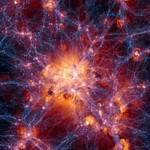

There are very few individuals on this planet who would not be captivated by the magnificent sight of the starry night sky. Gazing at this radiant and shimmering spectacle, one cannot help but ponder: what lies beyond? How are these remote worlds organized? Could there possibly be living organisms inhabiting those realms? These and numerous other related inquiries are addressed by the field of ASTRONOMY.
The term “astronomy” is derived from the ancient Greek words ἀστήρ, ἄστρον (aster, astron – “star”) and νόμος (nomos – “custom, establishment, law”). It is the scientific study of the cosmos, examining the positioning, movement, structure, origin, and evolution of celestial bodies and the systems they comprise.
Branches of astronomy
Astronomy encompasses a wide range of subjects and phenomena, including the Sun, stars, planets and their moons within our solar system, exoplanets, asteroids, comets, meteorites, interplanetary and interstellar matter, pulsars, black holes, nebulae, galaxies, clusters, quasars, and much more. To study and understand these various aspects, the field of astronomy is divided into several major branches:
Astrometry focuses on the observation and measurement of the motion and positions of celestial objects.
Celestial mechanics investigates the laws of motion governing celestial bodies, as well as determining their masses, shapes, and the stability of their systems.
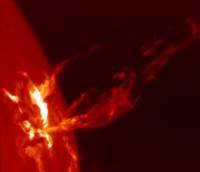
Astrophysics is the scientific discipline that focuses on the examination of the arrangement, physical attributes, and chemical composition of celestial objects;
Cosmogony (derived from the Greek word kosmogonía, which combines kósmos – world, universe and gone, goneia – birth) is a scientific field that explores the formation and evolution of cosmic entities and their systems, such as stars and star clusters, galaxies, nebulae, the solar system, and all its constituent bodies including the Sun, planets (including Earth), their satellites, asteroids (or minor planets), comets, and meteorites;
Amateur astronomy has made a significant contribution to the progress of science. However, we will discuss it separately.
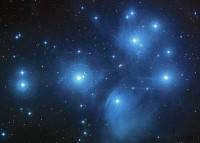
Astronomy Objectives
The goals of the field of astronomy encompass:
1. Investigating the visible and actual positions and movements of celestial bodies in space, determining their size and shape.
2. Exploring the composition and physical properties (density, temperature, etc.) of celestial bodies, as well as their structural characteristics.
3. Addressing the origin and development of individual celestial bodies and the systems they form.
4. Examining the fundamental properties of the Universe and formulating the theory of the observable portion of the Universe – the Metagalaxy.
There is already a significant amount of information accumulated in the field of celestial body study. However, the introduction of spectral analysis and photography has made it possible to study the structure of celestial bodies. The study of the physical properties of celestial bodies began in the latter half of the 19th century, and it is only in recent years that the main problems have emerged. Therefore, young astronomers have plenty of work to do. To fully understand the origins and development of individual celestial bodies, it is necessary to gather materials from observations. However, at present, there is still not enough data to accurately describe the processes involved. As a result, knowledge in this field is currently limited to general considerations and a few plausible hypotheses. This means that young astronomers will have many opportunities for discovery in this area.
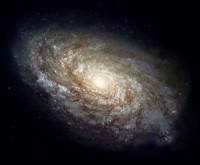

The most challenging task at hand is to develop a theory that encompasses the overall characteristics of the Metagalaxy. This particular task necessitates observational data from areas in the Universe that are several billion light years away, a feat that modern technology is not yet capable of achieving. However, addressing this task is of utmost importance, and astronomers from multiple countries, including Russia, are actively working towards finding a solution.
“Concepts, Methods and Laws” in the field of Astronomy
Astronomy shares many similarities with physics and mathematics, as they are all considered exact sciences, but it possesses its own unique characteristics. Consequently, numerous physical phenomena or laws have been unveiled through practical means, whereas astronomers typically lack the opportunity to conduct experiments due to the inaccessibility of numerous objects under study. This also holds true for mathematical calculations, as the immense distances and sizes of celestial objects necessitate calculations that are solely indirect, thereby impacting their precision.
In order to simplify numerical values in astronomy, specialized units of measurement were introduced, distinct from those used on Earth. For instance, astronomical units (a.u.) are commonly used to measure distance in astronomy. 1 a.u. is equivalent to 149 million kilometers, which is the length of the major semi-major axis of the Earth’s orbit. Another unit of measurement used in astronomy is the light-year, which represents the distance traveled by light in one year. 1 light-year is equal to approximately 9.5 trillion kilometers (9,460,528,177,426.82 km, to be precise).
Indeed, the study of celestial bodies originated in ancient times. During this era, individuals meticulously observed the movements of planets and stars in the sky, identifying and naming various clusters of stars, also known as constellations. In the Middle Ages, astronomy, along with numerous other fields of science, was condemned as heretical, leading to unjust persecution of numerous pioneering scientists. However, the Renaissance marked a pivotal period in the rapid advancement of astronomy. Moreover, in the latter half of the previous century, mankind achieved a monumental milestone by venturing into space, providing astronomers with the means to empirically validate many of their theories. Consequently, it is undeniable that astronautics and astronomy share an unbreakable bond.
Which disciplines focus on the Earth’s investigation?
There exist numerous disciplines that presently engage in the exploration of our planet and its celestial realms. Among them, geology stands out as a leading field. Its primary objective revolves around delineating the outermost strata of the Earth’s crust, scrutinizing their makeup, internal organization, and genesis.

The field of geology incorporates various disciplines that are interconnected and cannot exist independently:
- Geochemistry focuses on the study of chemical elements in different parts of the lithosphere.
- Mineralogy is closely related to physics and examines the origin, composition, and internal crystal structure of minerals.
- Tectonics investigates the relationships between the movements of Earth’s solid layers.
- Geomorphology explores landforms, their shapes, and diversity, with a particular emphasis on the processes that shape them.
Additionally, there are other sciences such as volcanology, paleontology, and many more that delve into the depths of our planet.

Furthermore, there are numerous other fields within the realm of geology, both new and old.
Other fields of study concerning the Earth
As previously mentioned, our planet is the subject of study in a multitude of distinct scientific disciplines. Below, we will outline some of the most fascinating sciences that are not considered sub-disciplines of geology:
- geography. This field brings to mind memories of school lessons;
- geodesy. It calculates the laws governing our planet’s movements;
- gemology. A science specialized in the study of gemstones;
- hydrology. It examines natural bodies of water and their interactions with other components of the Earth;
- Meteorology is essentially the study of weather.
- Geoinformatics is a relatively new field that develops software programs to aid in modern geological research. It is particularly helpful in the field of geostatistics.

Furthermore, numerous additional autonomous disciplines are dedicated to the examination of our celestial bodies. It is important to reiterate that these fields are all interconnected and collaborate by exchanging information, facilitating a collaborative effort.
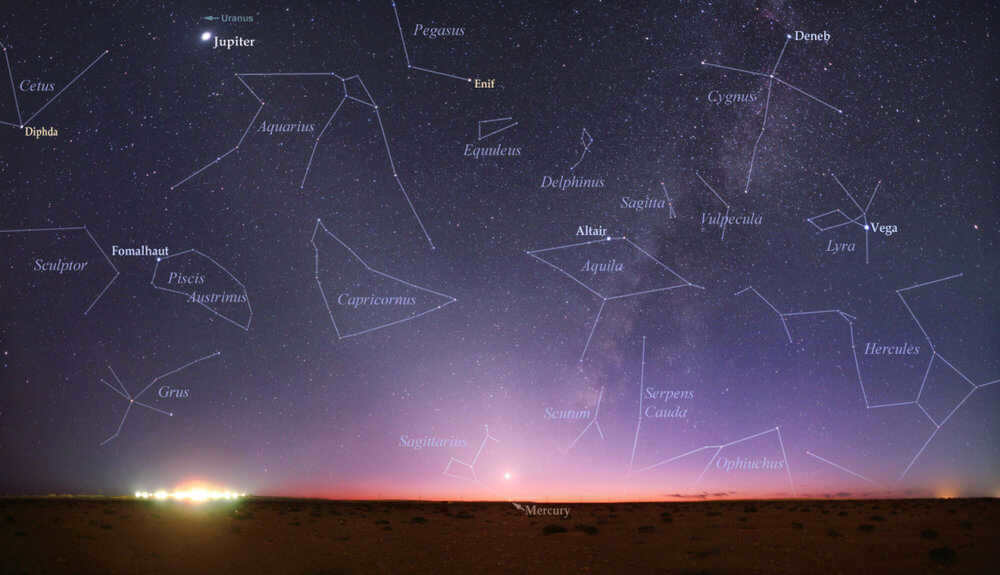
Throughout millennia, humanity has been assembling the celestial map, merging fragments of knowledge into a unified tapestry. With the advent of gravitational waves, we now have the ability to tune in to the cosmic symphony and chart unexplored frontiers. But what methods did our ancestors employ in the absence of these modern marvels?
Over a hundred million years in the past, a couple of extremely dense celestial bodies – two neutron stars – were revolving in their final orbits of their celestial dance. Just moments later, they merged together at a speed that is one-third of the speed of light, causing a tremendously powerful explosion that created gravitational waves that rippled throughout the entire universe. The aftermath of this catastrophic collision finally reached the Earth on the morning of August 17, 2017. As these gravitational waves passed through the Laser Interferometer Gravitational-Wave Observatory (LIGO), they stretched and compressed space and time, allowing us to detect a signal from these long-dead neutron stars.
However, that’s not the end of the story. In just over two seconds, there was a burst of light that followed the collision of the cosmic fire. This event could be observed using telescopes and marked a significant breakthrough in the field of astronomy. It was the first time that we were able to observe the cosmos using two different physical “messengers” simultaneously – witnessing the bright flash from the explosion and listening to the distinct “rattle” of the gravitational wave.
For thousands of years, we have been diligently studying and capturing images of the universe, equipping ourselves with increasingly advanced and costly telescopes. Now, with the ability to detect gravitational waves, we are able to “observe” previously hidden cosmic entities such as black holes and even uncover the existence of extraordinary celestial bodies that were previously unknown to us – such as wormholes or bosonic stars, for example.
First glance at the stars
The awe-inspiring lights that decorate our skies have perpetually captivated the imagination of individuals from diverse cultures. In fact, it was the heavenly constellations, rather than the earth’s terrain, that were initially depicted on maps.
However, what do we gain from observing the night sky? As stated by Gerhard Wiesenfeldt, a lecturer specializing in the history and philosophy of science at the University of Melbourne, we “strive to comprehend the enigmatic celestial entities we encounter on a daily basis, including attempting to fathom their impact on us,” and additionally, we “utilize the night sky for practical purposes.”
By studying the movement of celestial objects, particularly the calculation of planetary cycles, societies were able to develop various advancements such as clocks, observational instruments, mathematical algorithms, and sophisticated computational techniques.
The sky at night can be imagined as a celestial sphere encompassing our planet, with celestial latitudes and longitudes indicating positions. Similar to how we designate borders between countries on Earth using political and cultural understanding, we delineate the night sky into constellations based on human knowledge and observations from Earth.
The most well-known constellations are linked to the Western tradition of astronomy in the northern hemisphere, with many of them originating in Greek and Roman mythology. Examples include the Big Dipper, Orion, and the Pleiades, which are familiar to almost every civilization in the North. Another noteworthy constellation is the Zodiac belt, which was discovered in the Middle East during the first millennium BC and continues to be widely used in Western culture today.
During a time when the night sky remained a mystery and held strong mystical beliefs, various forms of astrology emerged as a substitute for science. These practices were once viewed as scientific endeavors that involved precise measurements and the recording of astronomical patterns.
Image: Constellations as seen from the northern hemisphere (NASA).
Ancient civilizations, including the indigenous people of Australia and the Peruvian Incas, have long recognized and recorded the southern constellations. The Australian natives, who have a rich cultural history dating back to 60,000 B.C., have been revered as the pioneers of astronomy, using the night sky for timekeeping and navigation.
This is just one example of the unique aspects of ancient astronomy: according to Wiesenfeldt, “many civilizations possessed astronomical knowledge that necessitated systematic and long-term observation that extended beyond the lifespan of an individual.”
Even numerous cultures in the northern hemisphere were aware of the precession of the equinoxes, a celestial phenomenon that occurs over a span of nearly 26,000 years and involves a gradual shift in the Earth’s axis due to lunar influence. Detecting this event would have required sky observations spanning at least a millennium.
Despite advancements in modern technology that have improved map accuracy, Wiesenfeldt argues that the art of cartography has “likely experienced minimal change” compared to the ancient study of celestial bodies, which formed the basis for modern astrophysics.
The Evolution of Contemporary Astronomical Charts
Previously, crafting a star chart served both a functional purpose and ignited an air of mysticism. Nowadays, it has primarily transformed into a subject of intellectual curiosity. Wiesenfeldt underscores that celestial observations are no longer necessary for establishing calendars or plotting routes, as we possess GPS systems for that. Nevertheless, thanks to the collaborative efforts of the scientific community worldwide, we now have the ability to generate remarkably intricate and all-encompassing maps of the cosmos.
So, what precisely enables this achievement?
To generate a global map, we have the ability to explore and visit nearly any location on Earth. However, when it comes to mapping the sky, we can’t simply hop in a rocket and traverse the cosmos. Instead, we rely on “messengers” that travel to us from distant corners of the universe, providing us with valuable information about their origin and the celestial objects that produced them. Typically, these messengers take the form of photons – minuscule particles of light emitted by celestial bodies like stars.
In the past, ancient maps of the night sky depicted a spherical projection of the Earth with luminous sources affixed to it. However, they lacked information regarding the distance between each of these stars or galaxies and our planet. To accurately map the distribution of stars and galaxies, astronomers needed to develop three-dimensional maps.
The expansion of the Universe offers assistance in our pursuit: as it continues to expand, the light-emitting sources move further away from us. Consequently, this results in a cosmological redshift, whereby the light emitted by objects becomes redder as their distance increases. Astronomers can leverage this phenomenon to calculate the distance that the light has traversed and, consequently, the distance to the object itself. Given that objects located farther away require a longer duration for their light to reach our planet, we are effectively able to gaze into the past and compare the current state of the Universe to its appearance in its younger days.
The initial comprehensive depiction of the celestial sphere by the Planck satellite, portraying the starry sky. This projection onto a two-dimensional space showcases the presence of Milky Way gas and dust along the equator.
“According to Penprase, modern astronomy can be considered a form of history because by analyzing starlight that originated billions of years ago, we can uncover messages about the origins of our universe.
The initial attempt to construct a three-dimensional representation of the universe was made by the Center for Astrophysics (CfA) through their redshift study. From 1977 to 1982, using a modest 1.5-meter telescope, they examined thousands of galaxies. This investigation revealed a complex arrangement of elongated filamentary structures and empty voids. However, the sample size of galaxies studied was insufficient to generate a comprehensive 3D map.”
The Sloan Digital Sky Survey has created a Map of the Universe, with each galaxy represented by a unique point.
Most optical telescopes that are used for observation, such as the SDSS, provide us with visible light observations. This type of light is easily visible to the human eye and allows us to see stars and galaxies. However, when we look at the gaps between these objects, they usually appear dark. But if we were to use a sensitive radio telescope, we would be able to detect a faint but still noticeable glow in these areas. This glow is the result of the Big Bang, which is the event believed to have created the universe. It is called the cosmic microwave background and it is the oldest light in our universe, dating back to when the universe was 380,000 years old. This light gives us a snapshot of what the universe looked like in its early stages, when it was a hot and dense plasma made up of protons and electrons. By studying this light, we are able to look back in time and gain a better understanding of the history of our universe. The Planck Telescope was specifically designed to study the cosmic microwave background and has provided us with the most detailed map of this ancient light.
Moreover, thanks to the advanced capabilities of this telescope, we are able to gain insights into the composition of the cosmos at various points in time. Nevertheless, it is worth noting that certain entities, such as black holes, do not emit any electromagnetic waves, which would leave our visualizations perpetually lacking crucial information. However, this shortfall is remedied by the field of gravitational-wave astronomy.
Delving into uncharted territory through the utilization of gravitational waves
Gravitational waves are not only a remarkable discovery in their own right but also serve as a valuable instrument for investigating unresolved astrophysical enigmas.
“Unlike light, gravitational waves are not deflected or absorbed when they traverse through matter,” elucidates Andrew Melatos, an Astrophysics Professor at the University of Melbourne and a contributor to the LIGO Science Collaboration. Consequently, we can utilize gravitational waves as an “extensive-range tool” to examine the cosmos without distortion caused by collisions with cosmic obstacles.
Similar to how the cosmic microwave background serves as a remnant of electromagnetic radiation from the early stages of the universe, scientists anticipate the existence of a gravitational-wave background. This background is expected to originate from two distinct sources: the first being the “astrophysical” background generated by the merging of black holes, which individually may be too faint to detect but still contribute to the overall gravitational wave signal, and the second being the cosmological gravitational wave background. This cosmological background can be thought of as the gravitational equivalent of a microwave wave, albeit originating from events that occurred even further back in time, offering us insights into the physics of the universe’s initial moments following the Big Bang.
It is even more remarkable to consider the concept that gravitational waves have the potential to chart the entire universe at the very moment of its inception. Currently, our ability to perceive the universe is limited to only 380,000 years after the Big Bang, as the random paths taken by photons in the dense fog following the event have erased any electromagnetic information from that time period.
However, the gravitational data remains unaffected. Scientists envision the possibility of observing our universe less than a second after its birth.
An illustration showcasing the gravitational wave signal across the celestial sphere. Image credit: LIGO Lab
Regrettably, the anticipated signal from the primary gravitational background is expected to be considerably weaker than what is currently observable using LIGO. To directly detect this feeble signal, the construction of an exceptionally powerful gravitational wave detector would be necessary.

